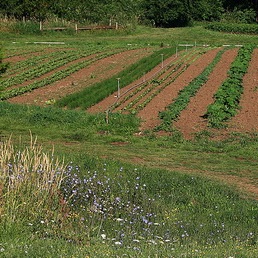May 16, 2014 — There is a long-standing sense that organic farms are better for biodiversity than are conventional farms. But how much better? The answer to that is important when weighing the trade-offs between focusing on boosting biodiversity on farmed land (“land sharing”) versus using less land more intensively with higher-yielding conventional farming (“land sparing”).
A study just published in the Journal of Applied Ecology provides strong evidence that the benefits are indeed bountiful. Gathering results of 94 previous studies of farmland biodiversity into one giant meta-analysis, researchers from the U.K., Sweden and Switzerland looked at both species richness (the number of different taxonomic groups represented) and functional diversity (the types of ecological functions performed). They found that across all study sites, biodiversity was an average of 34 percent higher on organic farms than on conventional farms.
The biggest beneficiaries? From a species standpoint, plants showed the greatest biodiversity boost, with insects, birds and microorganisms also substantially higher on organic farms. Functionally, pollinators appeared to benefit most from organic farming, with decomposers showing little difference.
“This analysis affirms that organic farming usually has large positive effects on average species richness compared with conventional farming,” the researchers concluded. “Given the large areas of land currently under agricultural production, organic methods could undoubtedly play a major role in halting the continued loss of diversity from industrialized nations.” Photo courtesy of Sally (Creative Commons | Flickr), and a hat tip to Science for Environment Policy for sharing the story.
Ensia shares solutions-focused stories free of charge through our online magazine and partner media. That means audiences around the world have ready access to stories that can — and do — help them shape a better future. If you value our work, please show your support today.
Yes, I'll support Ensia!
